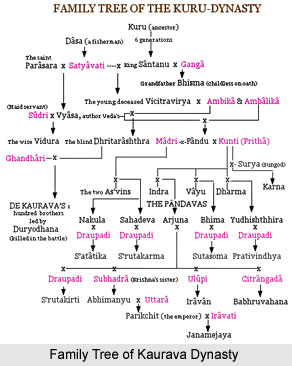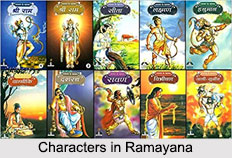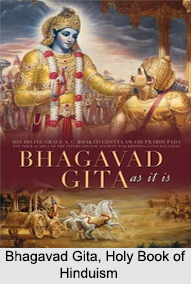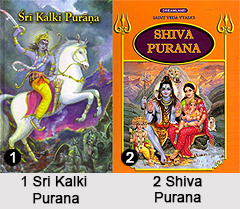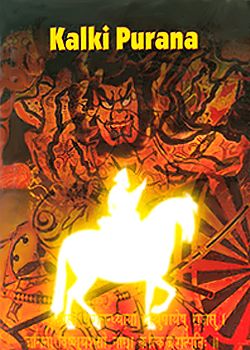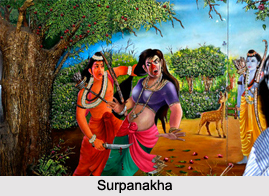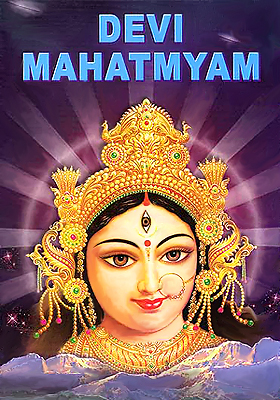 Devi Mahatmyam is a part of the Markandeya Purana. It is also known as Durga Saptashati or Chandi Patha. Devi Mahatmyam contains 700 verses that have been arranged into thirteen chapters. This is considered as the most important text of Shaktism. Devi Mahatmyam is considered as an effort to unify the Vedic male pantheon with the pre-existing mother goddess cult. Some aspects of Samkhya philosophy have also been elaborated in the narrative.
Devi Mahatmyam is a part of the Markandeya Purana. It is also known as Durga Saptashati or Chandi Patha. Devi Mahatmyam contains 700 verses that have been arranged into thirteen chapters. This is considered as the most important text of Shaktism. Devi Mahatmyam is considered as an effort to unify the Vedic male pantheon with the pre-existing mother goddess cult. Some aspects of Samkhya philosophy have also been elaborated in the narrative.
This text is also read as part of the Navaratri celebrations in honour of the Goddess.
This text deals with the story of seven mothers and they are Brahmi, Maheswari, Kaumari, Vaishnavi, Varahi, Indrani and Chamunda.
Devi Mahatmya accepts the ancient Vedic tradition in the form of Vak and Trayi Vidya. It also emphasizes the philosophical doctrine of the codified system of Samkhya and Vedanta as Paramavidya. It also synthesizes the then prevailing local Mother goddess cults of Aryan and non-Aryan origin.
Though in Devi Mahatmyam Lord Shiva has been mentioned the goddess bears no special relationship to him. Devi Mahatmyam avoids characterizing such forms as consorts. Devi Mahatmyam is the Testament of Shakta philosophy. It is the base of Shakta doctrine. Several commentaries on Devi Mahatmyam are: Santhanavi, Puspanjali, Ramashrami, Nagesi, Dhamsoddharam, Guptavati, and Durgapradeepam. It significance has been explained in Tantric and Puranic texts like Katyayani Tantra, Gataka Tantra, Krodha Tantra, Meru Tantram, Marisa Kalpam, Rudra Yamala, and Chidambara Rahasya.
The thirteen chapters of Devi Mahatmyam are divided into three episodes. At the starting of each episode a different presiding goddess is invoked and none of them are mentioned in the text itself. The framing narrative of Devi Mahatmyam presents a dispossessed king, a merchant betrayed by his family, and a sage whose teachings lead to existential suffering. The story of Mahishasura Mardini is the most famous story. Kali and the Sapta Matrikas are considered as the most important Goddesses.
The four Hymns in Devi Mahatmyam are:
* Brahma-stuti or Tantrik Ratri Suktam
* Sakradi-stuti
* The "Ya Devi" Hymn and
* Narayani-stuti
Over the years Devi Mahatmyam has acquired several subsidiary texts. The preceding subsidiary texts are:
"Amba Stuti", Devi-kavacham, Argala-stotram, Keelakam, Ratri Suktam Kunjika Stotram and Ratri Suktam. The succeeding subsidiary texts are Pradhana Rahasyam, Vaikritika Rahasyam, Murti Rahasyam, Devi Suktam and Devi Suktam (Tantric).
During Sharad Navaratri Devi Mahatmyam is recited. It is also recited during the Vasantha Navaratri (March - April) in Uttarakhand, Kashmir, Himachal Pradesh and other states of north India. Devi Mahatmyam is also the ritual text for performing Chandi Yajna that is performed for the general welfare of the people.













